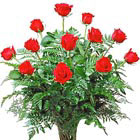Japanese people go to a kaiseki restaurant during special occasions. If you need to entertain your special guests, kaiseki-ryori is a good choice. Kaiseki-ryori uses the fresh ingredients of the season and are cooked in ways that enhance the original taste of the ingredients. Each dish is simply seasoned and presented beautifully in nice dinnerware.
Most kaiseki restaurants are high class and very formal. The kaiseki-ryori is usually expensive because it takes time and skill to prepare. If you eat a course in a kaiseki restaurant, it can cost $150 or more per person. But most of these restaurants offer more reasonably priced lunch meals called kaiseki - bento or mini-kaiseki which can be under $40 per person. Outside of Japan, sushi restaurants tend to serve mini-kaiseki. Each kaiseki restaurant's prices vary, so you should be able to find a restaurant to match your budget and remember to make a reservation.
Let's start out with the question, what does "Kaiseki-ryori" mean? If you ask a Japanese person this question, they might tell you that it is the Japanese cuisine usually to entertain your guests. But if you ask what the word exactly mean then they might not know without knowing its origin. By the way, "ryori" means cooking, so what does "kaiseki" mean?
The origin of the word, Kaiseki is said to comes from an old tale that a Buddhist monk in strict Zen training used to hold a hot stone (seki) in their kimono robes (kai) in order to make their fasting and cold more bearable.
The kaiseki-ryori was originally served during traditional tea ceremonies which followed the basic rules of the tea ceremony. It was thought that the tea would taste better if the people weren't starved. So the word "kaiseki" is then used for the light meal served during the tea ceremony. Since Japanese restaurants and inns started to serve a meal calling Kaisei-ryori which is a ultimate cuisine prepared with extra time and effort, the meal served in actual tea ceremony is called cha (tea) kaiseki to differentiate from the one served in the restaurants.
Kaiseki is a meal of courses, consisting of a number of small dishes: steamed dishes, simmered dishes, and grilled dishes. It often includes sashimi, tempura, grilled fish, soup, rice. Kaiseki-ryori was vegetarian in its origin, but nowadays, the modern kaiseki meal may include meat and seafood. Kaiseki-ryori uses the freshest ingredients of the season and often things from nature such as tree leaves and flowers accompany the dish.
Kaiseki-ryori is about taking your time to eat and enjoy the presentation of the food and the atmosphere of the room.
Kaisaki
Kaiseki - Spring
Kaiseki - more picture
Kaiseki lunch box in Kyoto
Kaiseki lunch box
Mini Kaiseki
 It's the application for iPhone and iPodtouch developed by the Japanese game deverloper company called Polygon Magic, Inc. It basically plays a sound of flushing toilet for 30 sec or longer.
It's the application for iPhone and iPodtouch developed by the Japanese game deverloper company called Polygon Magic, Inc. It basically plays a sound of flushing toilet for 30 sec or longer. 






